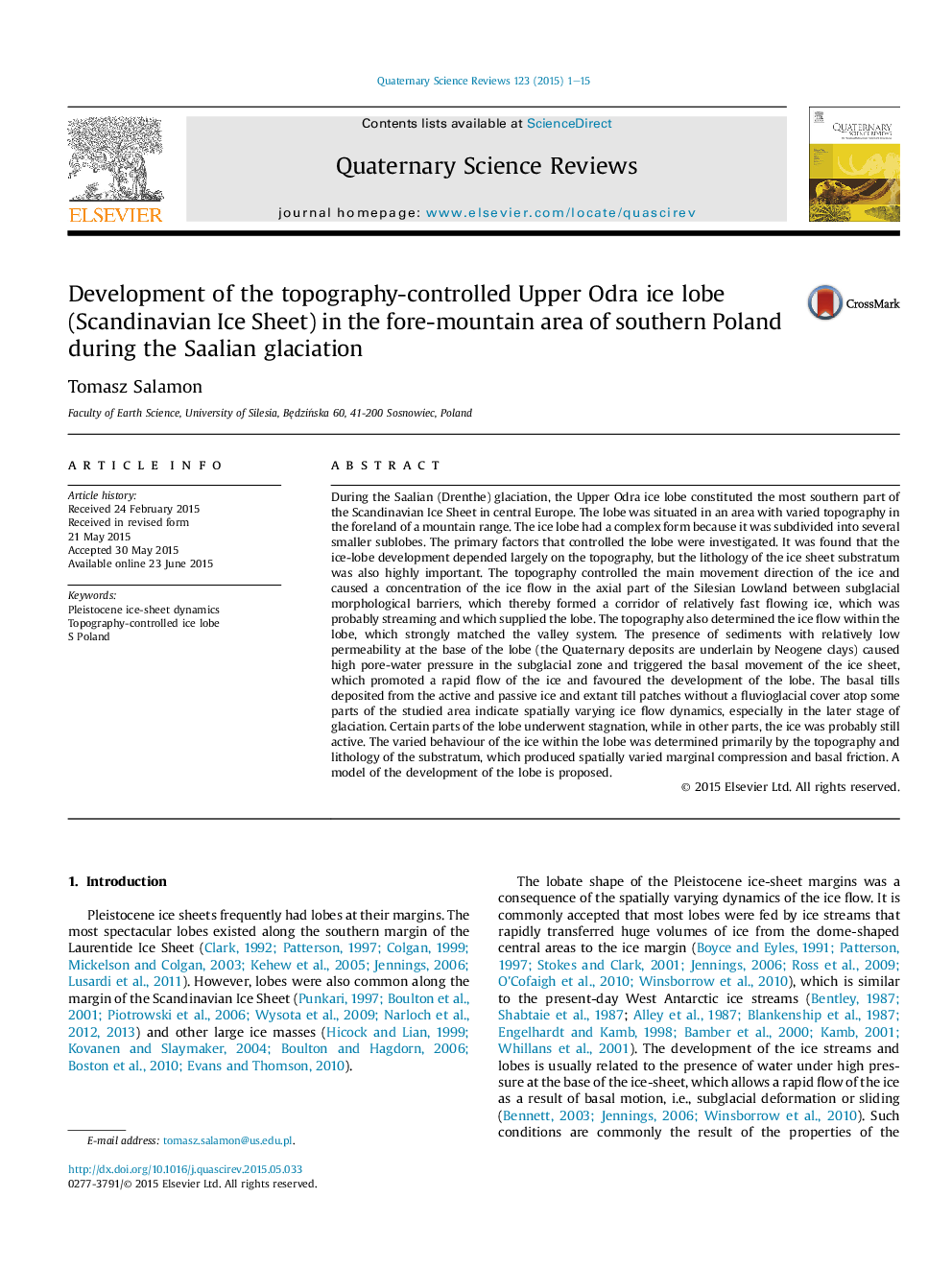| کد مقاله | کد نشریه | سال انتشار | مقاله انگلیسی | نسخه تمام متن |
|---|---|---|---|---|
| 4735283 | 1640811 | 2015 | 15 صفحه PDF | دانلود رایگان |
عنوان انگلیسی مقاله ISI
Development of the topography-controlled Upper Odra ice lobe (Scandinavian Ice Sheet) in the fore-mountain area of southern Poland during the Saalian glaciation
ترجمه فارسی عنوان
توسعه یک لوب بالا یک لایه یک لایه یک اسکاندیناوی در منطقه یکی از کوههای جنوبی لهستان در طی یخ زدگی سلیانی
دانلود مقاله + سفارش ترجمه
دانلود مقاله ISI انگلیسی
رایگان برای ایرانیان
موضوعات مرتبط
مهندسی و علوم پایه
علوم زمین و سیارات
زمین شناسی
چکیده انگلیسی
During the Saalian (Drenthe) glaciation, the Upper Odra ice lobe constituted the most southern part of the Scandinavian Ice Sheet in central Europe. The lobe was situated in an area with varied topography in the foreland of a mountain range. The ice lobe had a complex form because it was subdivided into several smaller sublobes. The primary factors that controlled the lobe were investigated. It was found that the ice-lobe development depended largely on the topography, but the lithology of the ice sheet substratum was also highly important. The topography controlled the main movement direction of the ice and caused a concentration of the ice flow in the axial part of the Silesian Lowland between subglacial morphological barriers, which thereby formed a corridor of relatively fast flowing ice, which was probably streaming and which supplied the lobe. The topography also determined the ice flow within the lobe, which strongly matched the valley system. The presence of sediments with relatively low permeability at the base of the lobe (the Quaternary deposits are underlain by Neogene clays) caused high pore-water pressure in the subglacial zone and triggered the basal movement of the ice sheet, which promoted a rapid flow of the ice and favoured the development of the lobe. The basal tills deposited from the active and passive ice and extant till patches without a fluvioglacial cover atop some parts of the studied area indicate spatially varying ice flow dynamics, especially in the later stage of glaciation. Certain parts of the lobe underwent stagnation, while in other parts, the ice was probably still active. The varied behaviour of the ice within the lobe was determined primarily by the topography and lithology of the substratum, which produced spatially varied marginal compression and basal friction. A model of the development of the lobe is proposed.
ناشر
Database: Elsevier - ScienceDirect (ساینس دایرکت)
Journal: Quaternary Science Reviews - Volume 123, 1 September 2015, Pages 1-15
Journal: Quaternary Science Reviews - Volume 123, 1 September 2015, Pages 1-15
نویسندگان
Tomasz Salamon,
